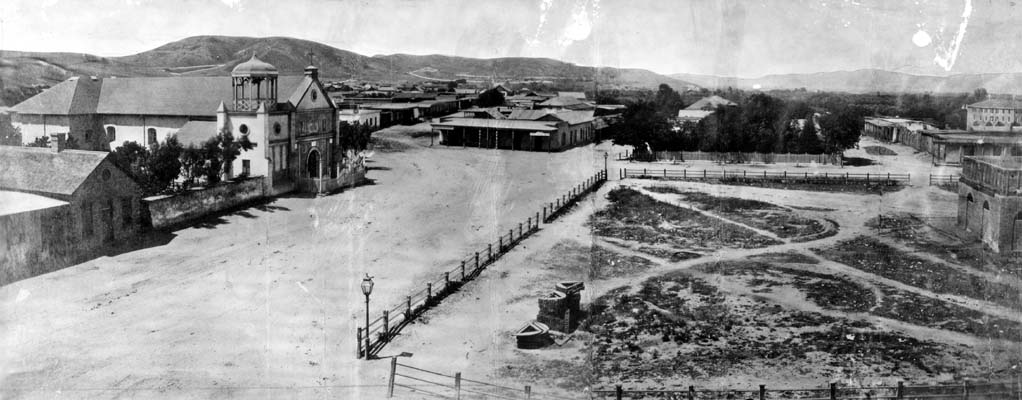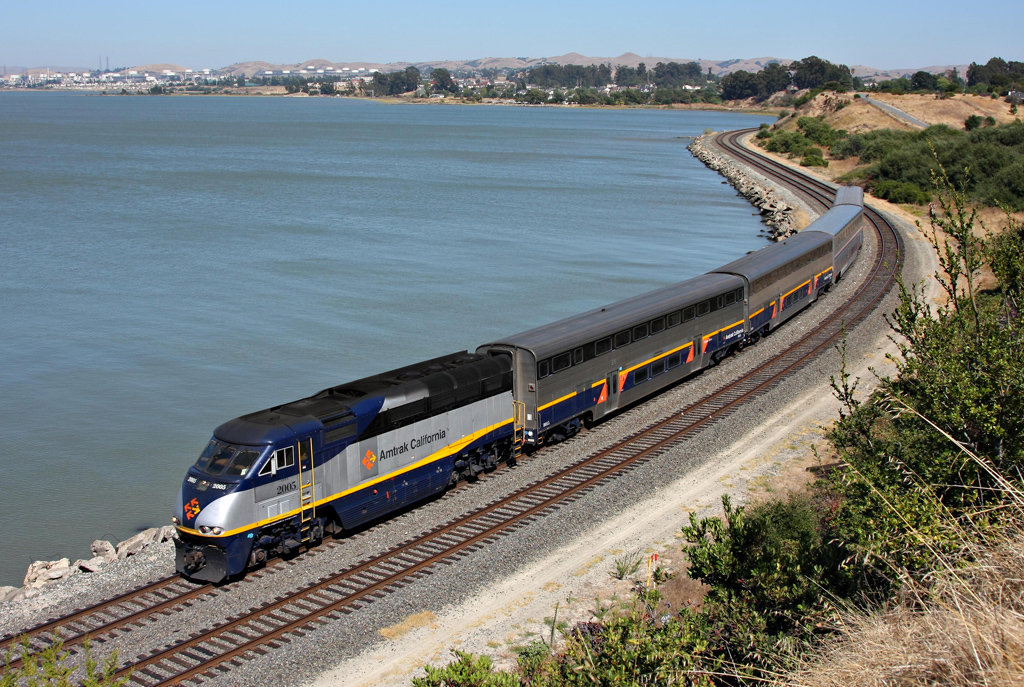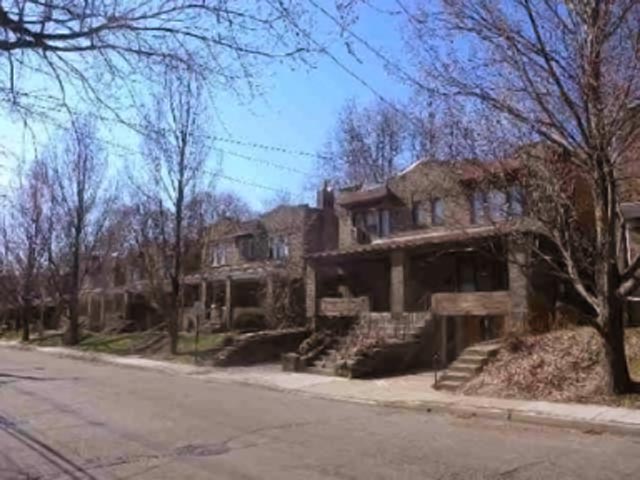|
Echo Park Avenue Line
The Echo Park Avenue Line was a Pacific Electric streetcar line in Los Angeles. The railway traveled from 11th and Hill Streets in downtown Los Angeles along the Hollywood Line to Sunset Boulevard where it turned right and proceeded north along Echo Park Avenue to terminate at Cerro Gordo Street in the Echo Park neighborhood. History The route was opened as a horsecar line in 1889 under the Elysian Park Street Railway Company. Pacific Electric designated the service with the number 32. At the time of the Great Merger of 1911, the line operated only as a shuttle on Echo Park Avenue between Sunset and Cerrito Gordo. Early the following year, the cars were continuing downtown to be through-routed with the Venice Boulevard Line. The inbound terminus was truncated to 9th and Hill in 1916. Between July and September 1926, the terminal was extended to 11th and Hill. Power issues in 1924 forced the route to again operate as a shuttle service on Echo Park between July and November. Thro ... [...More Info...] [...Related Items...] OR: [Wikipedia] [Google] [Baidu] |
Streetcar
A tram (called a streetcar or trolley in North America) is a rail vehicle that travels on tramway tracks on public urban streets; some include segments on segregated right-of-way. The tramlines or networks operated as public transport are called tramways or simply trams/streetcars. Many recently built tramways use the contemporary term light rail. The vehicles are called streetcars or trolleys (not to be confused with trolleybus) in North America and trams or tramcars elsewhere. The first two terms are often used interchangeably in the United States, with ''trolley'' being the preferred term in the eastern US and ''streetcar'' in the western US. ''Streetcar'' or ''tramway'' are preferred in Canada. In parts of the United States, internally powered buses made to resemble a streetcar are often referred to as "trolleys". To avoid further confusion with trolley buses, the American Public Transportation Association (APTA) refers to them as "trolley-replica buses". In the United ... [...More Info...] [...Related Items...] OR: [Wikipedia] [Google] [Baidu] |
Streetcars In Los Angeles
Streetcars in Los Angeles over history have included horse-drawn streetcars and cable cars, and later extensive electric streetcar networks of the Los Angeles Railway and Pacific Electric Railway and their predecessors. Also included are modern light rail lines. Horse-drawn streetcars (1874–1897) Horse-drawn streetcars started with the Spring and Sixth Street Railroad in 1874. Single truck, open air cars traversed unpaved streets. Numerous companies built tracks, with some merging to form larger networks. More railroads of the era included the Main Street and Agricultural Park Railway, the Depot Railway, the City Railroad, and the Central Railroad. The last horsecars were converted to electric in 1897. Cable cars (1885–1902) Cable car street railways in Los Angeles first began operating up Bunker Hill in 1885, with a total of three companies operating in the period through 1902, when the lines were electrified and electric streetcars were introduced largely followin ... [...More Info...] [...Related Items...] OR: [Wikipedia] [Google] [Baidu] |
Railway Lines Closed In 1950
Rail transport (also known as train transport) is a means of transport that transfers passengers and goods on wheeled vehicles running on rails, which are incorporated in tracks. In contrast to road transport, where the vehicles run on a prepared flat surface, rail vehicles (rolling stock) are directionally guided by the tracks on which they run. Tracks usually consist of steel rails, installed on sleepers (ties) set in ballast, on which the rolling stock, usually fitted with metal wheels, moves. Other variations are also possible, such as "slab track", in which the rails are fastened to a concrete foundation resting on a prepared subsurface. Rolling stock in a rail transport system generally encounters lower frictional resistance than rubber-tyred road vehicles, so passenger and freight cars (carriages and wagons) can be coupled into longer trains. The operation is carried out by a railway company, providing transport between train stations or freight customer facil ... [...More Info...] [...Related Items...] OR: [Wikipedia] [Google] [Baidu] |
Pacific Electric Routes
The Pacific Ocean is the largest and deepest of Earth's five oceanic divisions. It extends from the Arctic Ocean in the north to the Southern Ocean (or, depending on definition, to Antarctica) in the south, and is bounded by the continents of Asia and Oceania in the west and the Americas in the east. At in area (as defined with a southern Antarctic border), this largest division of the World Ocean—and, in turn, the hydrosphere—covers about 46% of Earth's water surface and about 32% of its total surface area, larger than Earth's entire land area combined .Pacific Ocean . '' Britannica Concise.'' 2008: Encyclopædia Britannica, Inc. The centers of both the [...More Info...] [...Related Items...] OR: [Wikipedia] [Google] [Baidu] |
Light Rail In California
Light or visible light is electromagnetic radiation that can be perceived by the human eye. Visible light is usually defined as having wavelengths in the range of 400–700 nanometres (nm), corresponding to frequencies of 750–420 terahertz, between the infrared (with longer wavelengths) and the ultraviolet (with shorter wavelengths). In physics, the term "light" may refer more broadly to electromagnetic radiation of any wavelength, whether visible or not. In this sense, gamma rays, X-rays, microwaves and radio waves are also light. The primary properties of light are intensity, propagation direction, frequency or wavelength spectrum and polarization. Its speed in a vacuum, 299 792 458 metres a second (m/s), is one of the fundamental constants of nature. Like all types of electromagnetic radiation, visible light propagates by massless elementary particles called photons that represents the quanta of electromagnetic field, and can be analyzed as both waves and particl ... [...More Info...] [...Related Items...] OR: [Wikipedia] [Google] [Baidu] |
History Of Los Angeles
The history of Los Angeles began in 1781 when 44 settlers from central New Spain (modern Mexico) established a permanent settlement in what is now Downtown Los Angeles, as instructed by Spanish Governor of Las Californias, Felipe de Neve, and authorized by Viceroy Antonio María de Bucareli. After sovereignty changed from Mexico to the United States in 1848, great changes came from the completion of the Santa Fe railroad line from Chicago to Los Angeles in 1885. "Overlanders" flooded in, mostly white Protestants from the Lower Midwest and South. Los Angeles had a strong economic base in farming, oil, tourism, real estate and movies. It grew rapidly with many suburban areas inside and outside the city limits. Its motion picture industry made the city world-famous, and World War II brought new industry, especially high-tech aircraft construction. Politically the city was moderately conservative, with a weak labor union sector. Since the 1960s, growth has slowed—and traffic delays ... [...More Info...] [...Related Items...] OR: [Wikipedia] [Google] [Baidu] |
Interurban Press
Interurban Press was a small, privately owned American publishing company, specializing in books about streetcars, other forms of rail transit and railroads in North America, from 1943MacDougall, Kent (May 19, 1983). "Books Ring Bell With Devotees: Publisher Specializes in History of Trolleys". ''Los Angeles Times'', p. 1. until 1993.Ryll, Thomas (November 29, 1994). "Felida man tracks light rail" (profile of retired Interurban Press owner Mac Sebree). ''The Columbian'', p. A3. It was based in the Los Angeles area, and specifically in Glendale, California after 1976. Although its primary focus was on books, it also published three magazines starting in the 1980s, along with videos and calendars. At its peak, the company employed 10 people and generated about $2 million in business annually. Origins Originally named Interurbans, the company developed out of a mimeographed newsletter first distributed by its founder, Ira L. Swett, in 1943. The ''Interurbans News Letter'' was ... [...More Info...] [...Related Items...] OR: [Wikipedia] [Google] [Baidu] |
History Of Rail Transportation In California
The establishment of America's transcontinental rail lines securely linked California to the rest of the country, and the far-reaching transportation systems that grew out of them during the century that followed contributed to the state's social, political, and economic development. When California was admitted as a state to the United States in 1850, and for nearly two decades thereafter, it was in many ways isolated, an outpost on the Pacific, until the first transcontinental railroad was completed in 1869. Passenger rail transportation declined in the early- and mid-20th Century with the rise of the state's car culture and road system. It has since undergone something of a renaissance, with the introduction of services such as Metrolink, Coaster, Caltrain, Amtrak California, and others. On November 4, 2008, the People of California passed Proposition 1A, which helped provide financing for a high-speed rail line. 19th century Background The early Forty-Niners of the Calif ... [...More Info...] [...Related Items...] OR: [Wikipedia] [Google] [Baidu] |
List Of California Railroads
The following railroads operate in the U.S. state of California. __TOC__ Common freight carriers Freight carrier information is current . Other * Mare Island Rail Service (MIRS) * Oakland Global Rail Enterprise (OGRE) ** West Oakland Pacific Railroad ** Port of Oakland Railway (POAK) * Southern California Railroad (SCRR) *USG Corporation (USG) Passenger carriers Intercity *Amtrak (AMTK): ''California Zephyr'', ''Coast Starlight'', ''Southwest Chief'', '' Sunset Limited'' *Amtrak California (CDTX): ''Capitol Corridor'', ''Pacific Surfliner'' and '' San Joaquin'' *''California High-Speed Rail (under construction)'' Commuter rail *Altamont Corridor Express (ACE) *Arrow *Caltrain (JPBX) *Coaster (SDNX) * Metrolink (SCAX) *Peninsula Commute *Sonoma–Marin Area Rail Transit (SMART) Local *Bay Area Rapid Transit (BART) ** eBART ** Coliseum–Oakland International Airport line (people mover) *Los Angeles County Metro Rail (LACZ) *San Francisco Municipal Railway (MUNI) **Muni ... [...More Info...] [...Related Items...] OR: [Wikipedia] [Google] [Baidu] |
Streetcar Suburb
A streetcar suburb is a residential community whose growth and development was strongly shaped by the use of streetcar lines as a primary means of transportation. Such suburbs developed in the United States in the years before the automobile, when the introduction of the electric trolley or streetcar allowed the nation’s burgeoning middle class to move beyond the central city’s borders. Early suburbs were served by horsecars, but by the late 19th century cable cars and electric streetcars, or trams, were used, allowing residences to be built farther away from the urban core of a city. Streetcar suburbs, usually called additions or extensions at the time, were the forerunner of today's suburbs in the United States and Canada. San Francisco's Western Addition is one of the best examples of streetcar suburbs before westward and southward expansion occurred. Although most closely associated with the electric streetcar, the term can be used for any suburb originally built with stre ... [...More Info...] [...Related Items...] OR: [Wikipedia] [Google] [Baidu] |
Venice Boulevard Line
The Venice Boulevard Line (formerly the West 16th Street Line) was a local streetcar line of the Pacific Electric. It operated between Downtown Los Angeles and Vineyard Junction, where riders could transfer to interurban cars. Nearly all Venice Short Line cars did not accept local passengers, leaving this as the primary streetcar service along its namesake boulevard. Route From the outbound terminal at Vineyard Junction, the line ran east on Venice Boulevard (formerly known as 16th Street), turning north at Hill Street and running until the Hill Street Station. Early runs continued slightly further north to 4th Street and ending at Broadway. Later in its life, cars operated west of Vineyard as far as San Vicente and Genesee Street. Near Western Avenue, a set of sidings allowed interurban cars to bypass locals. History Portions of the route were constructed by the Los Angeles Traction Company beginning in 1896, and it was completed between Hill Street Station and Vineyard the f ... [...More Info...] [...Related Items...] OR: [Wikipedia] [Google] [Baidu] |
Pacific Electric
The Pacific Electric Railway Company, nicknamed the Red Cars, was a privately owned mass transit system in Southern California consisting of electrically powered streetcars, interurban cars, and buses and was the largest electric railway system in the world in the 1920s. Organized around the city centers of Los Angeles and San Bernardino, it connected cities in Los Angeles County, Orange County, San Bernardino County and Riverside County. The system shared dual gauge track with the narrow gauge Los Angeles Railway, "Yellow Car," or "LARy" system on Main Street in downtown Los Angeles (directly in front of the 6th and Main terminal), on 4th Street, and along Hawthorne Boulevard south of downtown Los Angeles toward the cities of Hawthorne, Gardena, and Torrance. Districts The system had four districts: * Northern District: San Gabriel Valley, including Pasadena, Mount Lowe, South Pasadena, Alhambra, El Monte, Covina, Duarte, Glendora, Azusa, Sierra Madre, and Monrovia. * ... [...More Info...] [...Related Items...] OR: [Wikipedia] [Google] [Baidu] |

.jpg)
.jpg)
.jpg)


